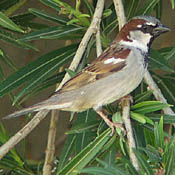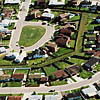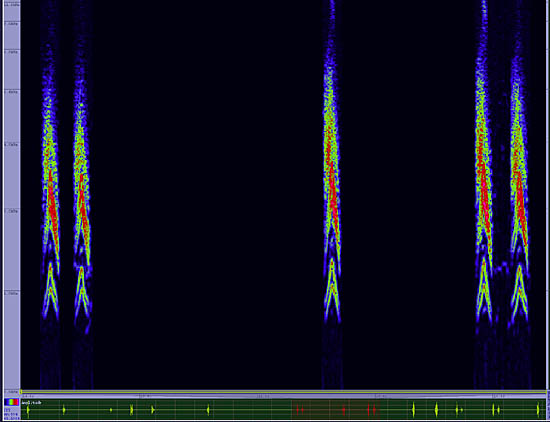House Sparrow
Passer domesticus

Perching

Length: 6 in. (16 cm )
Introduced to New York from Europe in the mid 1850s, the House Sparrow is totally dependent on humans for its present distribution in North America. Its populations have decreased tremendously since the horse, and its over flowing feed bags, were largely replaced by automobiles. Distinctly different geographical populations with unique colors and sizes have evolved in North America since it was first introduced. The nest is usually in a cavity and lined with grass, feathers and hair.
The four-digit banding code is HOSP.
Bibliographic details:
- Article: House Sparrow
- Author(s): Dr. Biology
- Publisher: Arizona State University School of Life Sciences Ask A Biologist
- Site name: ASU - Ask A Biologist
- Date published: 13 Jul, 2017
- Date accessed: 24 November, 2025
- Link: https://askabiologist.asu.edu/activities/bird/house-sparrow
APA Style
Dr. Biology. (Thu, 07/13/2017 - 15:37). House Sparrow. ASU - Ask A Biologist. Retrieved from https://askabiologist.asu.edu/activities/bird/house-sparrow
Chicago Manual of Style
Dr. Biology. "House Sparrow". ASU - Ask A Biologist. 13 Jul 2017. https://askabiologist.asu.edu/activities/bird/house-sparrow
MLA 2017 Style
Dr. Biology. "House Sparrow". ASU - Ask A Biologist. 13 Jul 2017. ASU - Ask A Biologist, Web. https://askabiologist.asu.edu/activities/bird/house-sparrow
Be Part of
Ask A Biologist
By volunteering, or simply sending us feedback on the site. Scientists, teachers, writers, illustrators, and translators are all important to the program. If you are interested in helping with the website we have a Volunteers page to get the process started.










